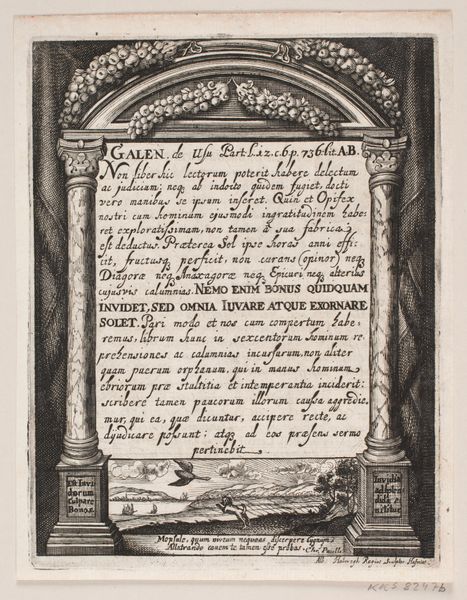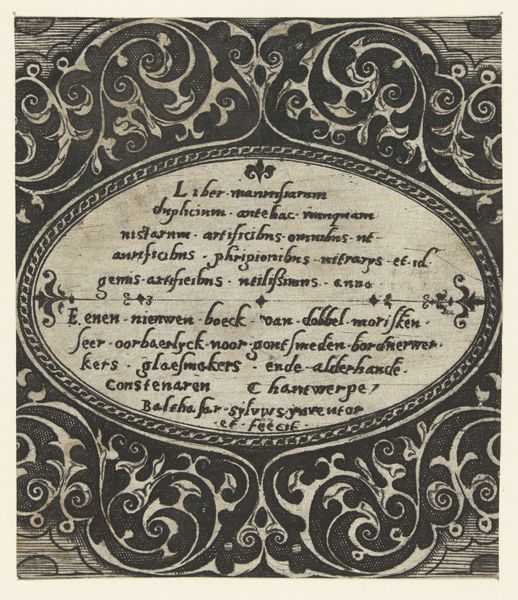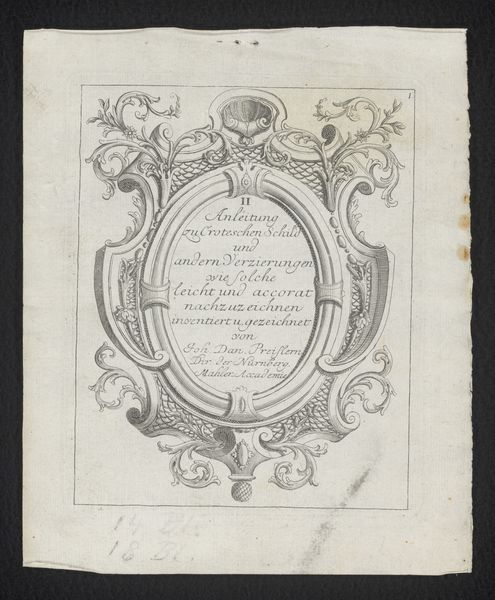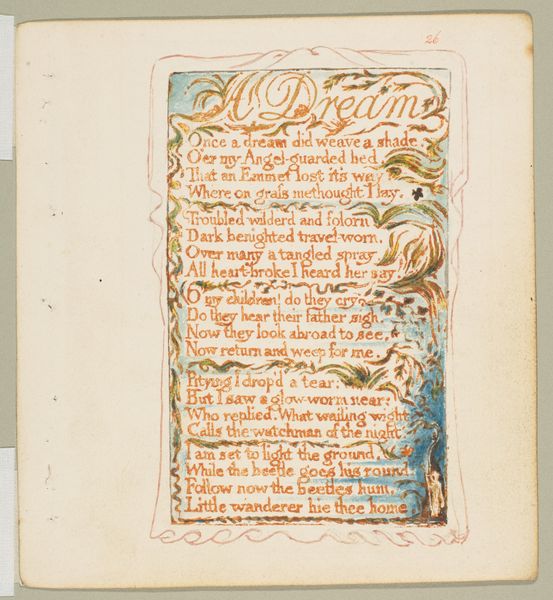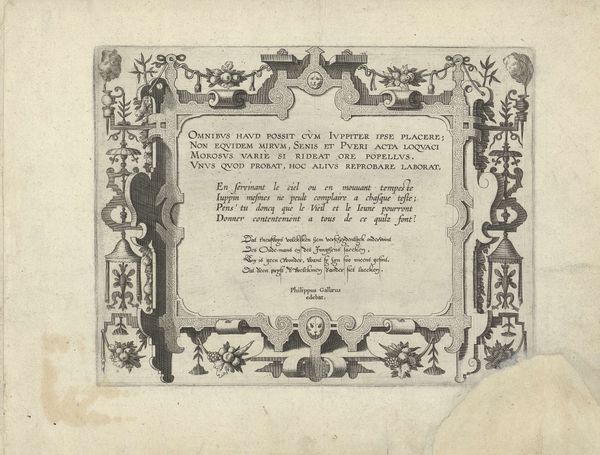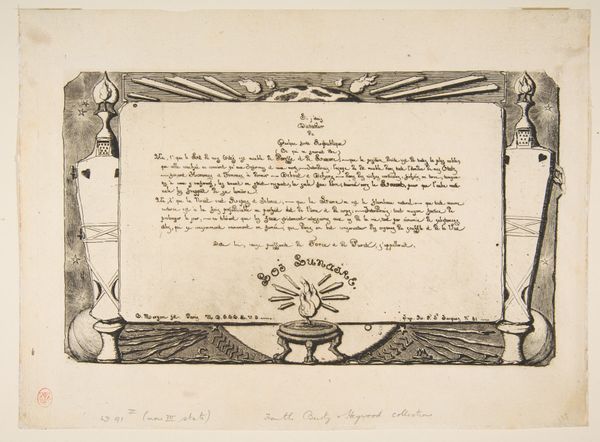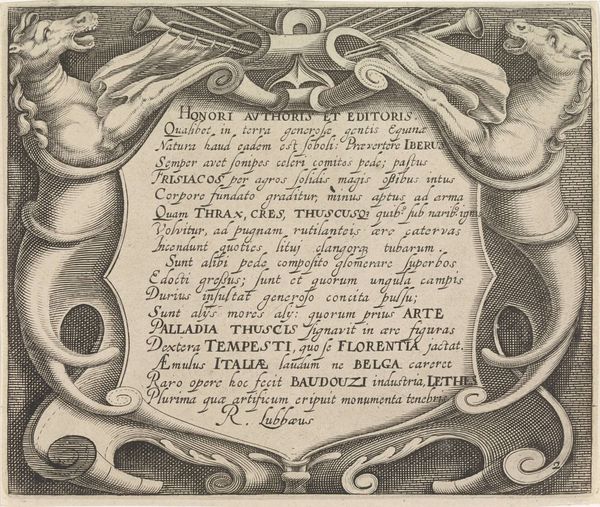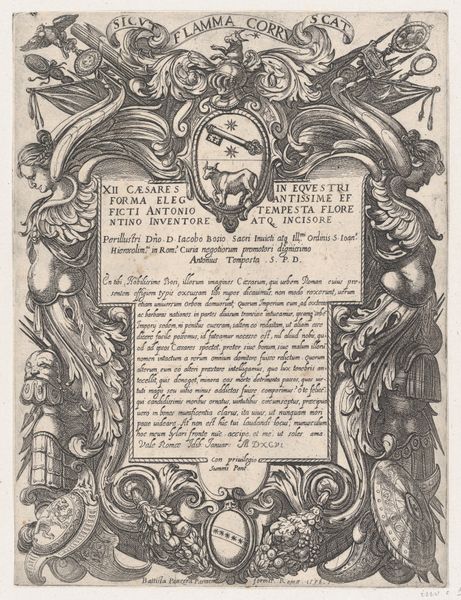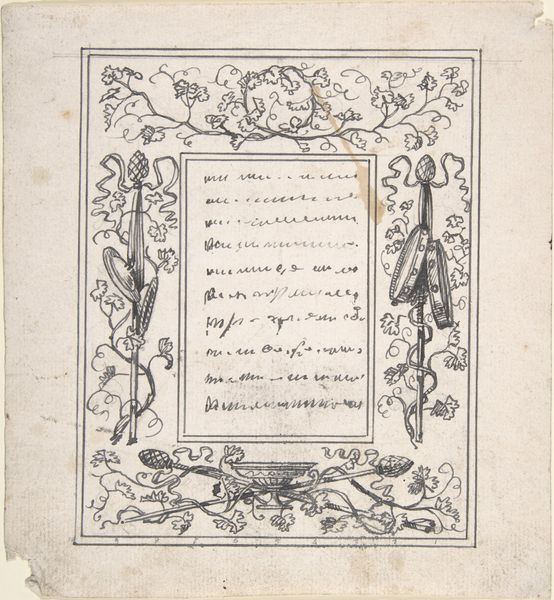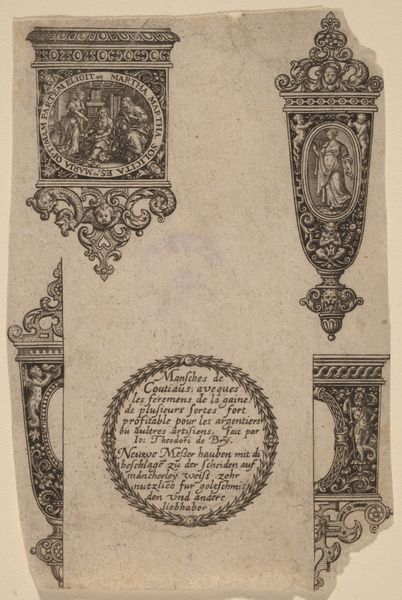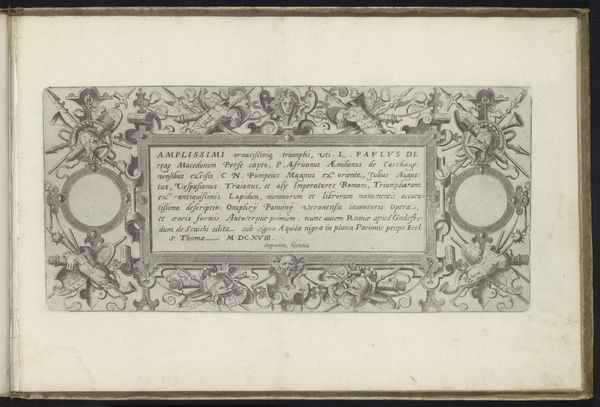
Illustration til Simon Paulli, "Quadripartitum Botanicum", 1667 1667
0:00
0:00
print, engraving
#
baroque
# print
#
old engraving style
#
landscape
#
history-painting
#
engraving
#
historical font
#
columned text
Dimensions: 180 mm (height) x 140 mm (width) (plademaal)
Curator: This is an engraving dating back to 1667, titled "Illustration til Simon Paulli, Quadripartitum Botanicum." It’s the work of Albert Haelwegh and it is currently held at the SMK, Statens Museum for Kunst. Editor: It looks like an advertisement or a title page. It has this fascinating tension between classical architecture and some quite loose, almost whimsical details. The inscription takes center stage, doesn't it? Curator: Absolutely. Haelwegh situates text as the primary visual element. The print served as a frontispiece for a botanical text. Note how it fuses knowledge and aesthetics, a reflection of the era’s interest in merging science and art. Consider, also, that books like Paulli's were often luxury items, signifiers of wealth and learning accessible only to a small portion of the population. Editor: Yes, the elaborate framing suggests something of high importance, elevating the text. The contrast between the dark, meticulously rendered details of the landscape vignettes and the stark, ordered Latin text is particularly interesting, though. I also note that there are garlands above that arch. Curator: Good eye! These embellishments contrast sharply with the rigid architectural frame. But look at how those tiny landscapes offer another perspective; each shows interaction with nature, and how humanity sees itself reflected back through discovery of medicine and nature's wonders. Editor: There’s an obvious power dynamic implied in these images, and in the central Latin text. Someone is acting upon their dominion of knowledge of nature… Curator: Precisely! Consider this botanical treatise within a broader context, it reflects a period defined by exploration and extraction and unequal access to knowledge. Haelwegh is giving us much more than just an image; he’s capturing a moment. Editor: On second viewing, I am seeing that integration now, and understanding how those different modes, image and word, and that arched architectural frame, are indeed essential to its totality. I think, considering that aspect, I view it a little bit differently than before. Curator: Seeing an artwork in its historical moment provides a fresh and needed understanding of ourselves, especially now. Editor: True, by analyzing the formal elements, it provided me a framework from which I could more concretely apply and understand what this era actually meant, from an art-making perspective.
Comments
No comments
Be the first to comment and join the conversation on the ultimate creative platform.
